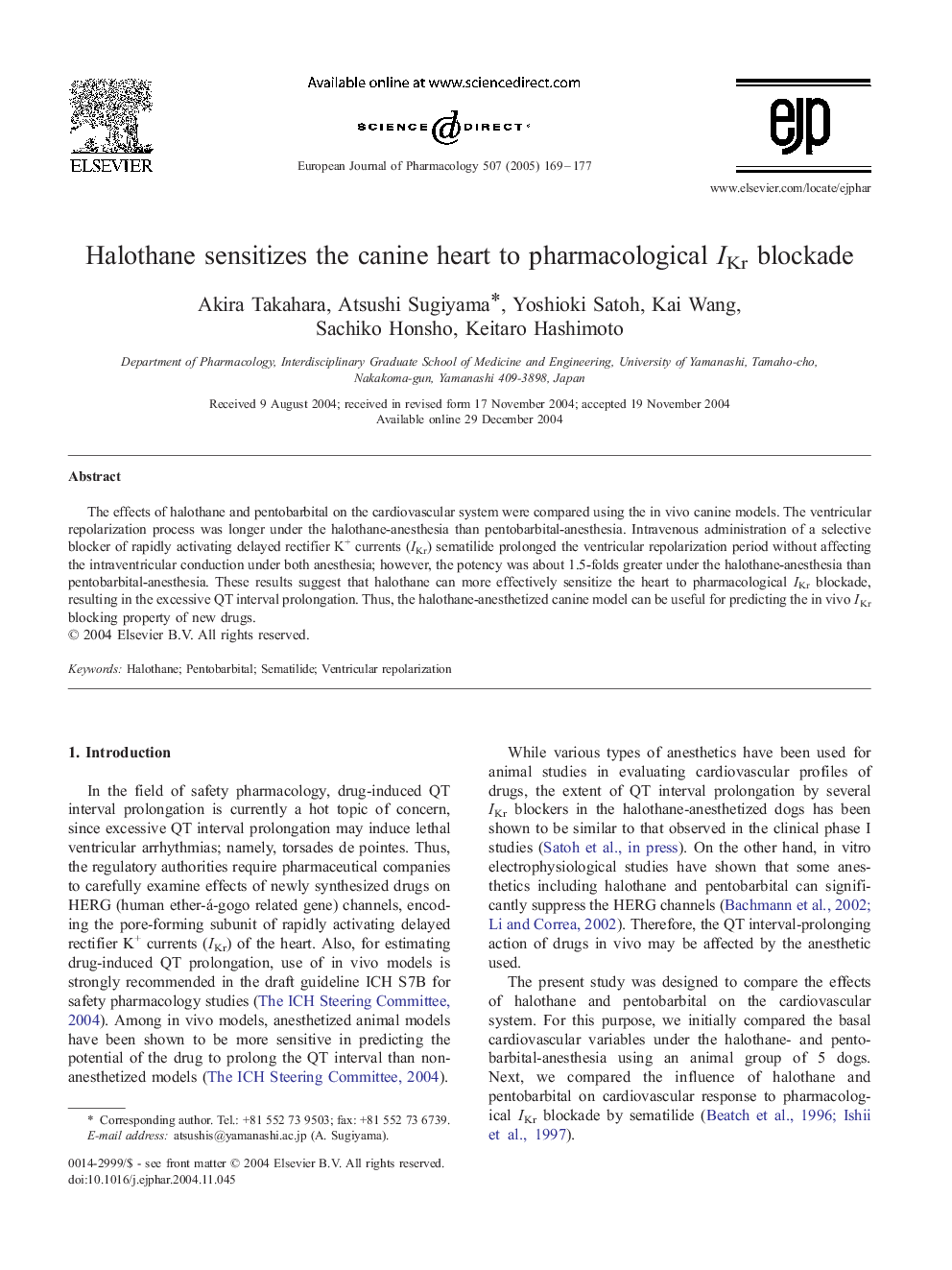| Article ID | Journal | Published Year | Pages | File Type |
|---|---|---|---|---|
| 9921569 | European Journal of Pharmacology | 2005 | 9 Pages |
Abstract
The effects of halothane and pentobarbital on the cardiovascular system were compared using the in vivo canine models. The ventricular repolarization process was longer under the halothane-anesthesia than pentobarbital-anesthesia. Intravenous administration of a selective blocker of rapidly activating delayed rectifier K+ currents (IKr) sematilide prolonged the ventricular repolarization period without affecting the intraventricular conduction under both anesthesia; however, the potency was about 1.5-folds greater under the halothane-anesthesia than pentobarbital-anesthesia. These results suggest that halothane can more effectively sensitize the heart to pharmacological IKr blockade, resulting in the excessive QT interval prolongation. Thus, the halothane-anesthetized canine model can be useful for predicting the in vivo IKr blocking property of new drugs.
Related Topics
Life Sciences
Neuroscience
Cellular and Molecular Neuroscience
Authors
Akira Takahara, Atsushi Sugiyama, Yoshioki Satoh, Kai Wang, Sachiko Honsho, Keitaro Hashimoto,
